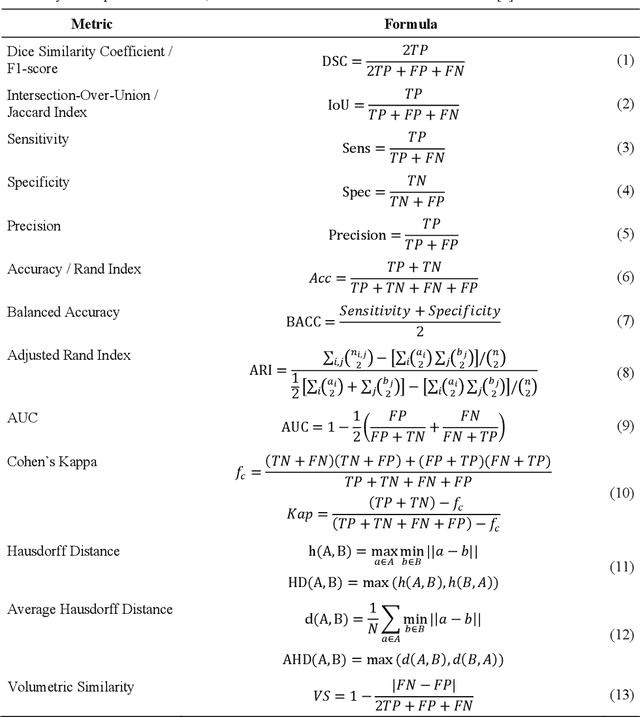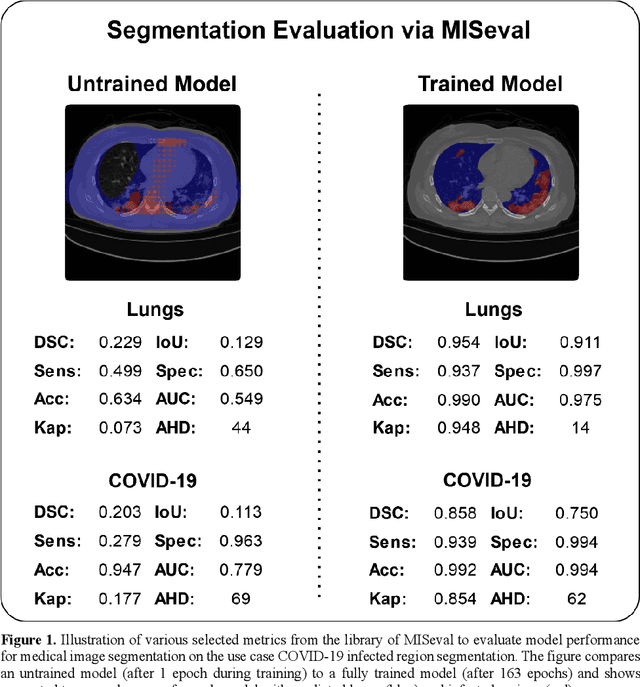Dennis Hartmann
MISm: A Medical Image Segmentation Metric for Evaluation of weak labeled Data
Oct 24, 2022Abstract:Performance measures are an important tool for assessing and comparing different medical image segmentation algorithms. Unfortunately, the current measures have their weaknesses when it comes to assessing certain edge cases. These limitations arouse when images with a very small region of interest or without a region of interest at all are assessed. As a solution for these limitations, we propose a new medical image segmentation metric: MISm. To evaluate MISm, the popular metrics in the medical image segmentation and MISm were compared using images of magnet resonance tomography from several scenarios. In order to allow application in the community and reproducibility of experimental results, we included MISm in the publicly available evaluation framework MISeval: https://github.com/frankkramer-lab/miseval/tree/master/miseval
MISeval: a Metric Library for Medical Image Segmentation Evaluation
Jan 23, 2022

Abstract:Correct performance assessment is crucial for evaluating modern artificial intelligence algorithms in medicine like deep-learning based medical image segmentation models. However, there is no universal metric library in Python for standardized and reproducible evaluation. Thus, we propose our open-source publicly available Python package MISeval: a metric library for Medical Image Segmentation Evaluation. The implemented metrics can be intuitively used and easily integrated into any performance assessment pipeline. The package utilizes modern CI/CD strategies to ensure functionality and stability. MISeval is available from PyPI (miseval) and GitHub: https://github.com/frankkramer-lab/miseval.
Assessing the Role of Random Forests in Medical Image Segmentation
Mar 30, 2021



Abstract:Neural networks represent a field of research that can quickly achieve very good results in the field of medical image segmentation using a GPU. A possible way to achieve good results without GPUs are random forests. For this purpose, two random forest approaches were compared with a state-of-the-art deep convolutional neural network. To make the comparison the PhC-C2DH-U373 and the retinal imaging datasets were used. The evaluation showed that the deep convolutional neutral network achieved the best results. However, one of the random forest approaches also achieved a similar high performance. Our results indicate that random forest approaches are a good alternative to deep convolutional neural networks and, thus, allow the usage of medical image segmentation without a GPU.
 Add to Chrome
Add to Chrome Add to Firefox
Add to Firefox Add to Edge
Add to Edge